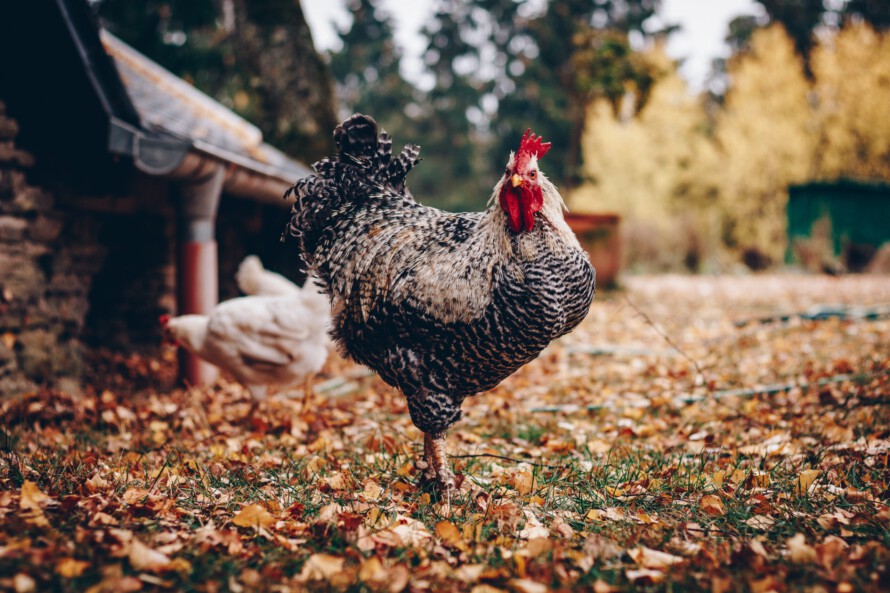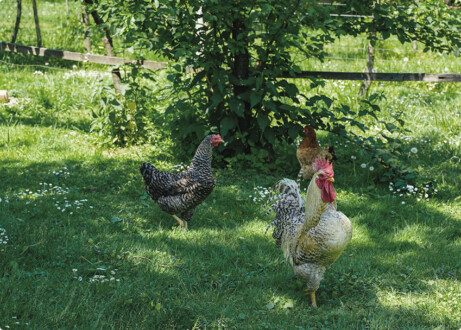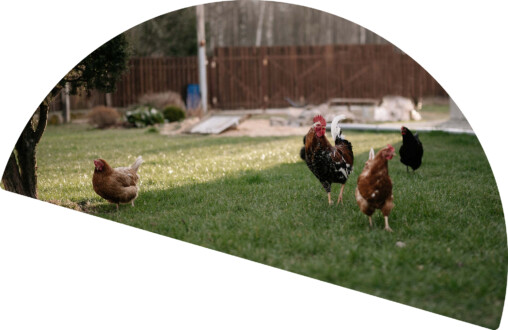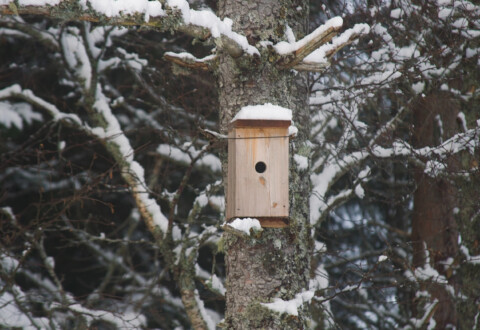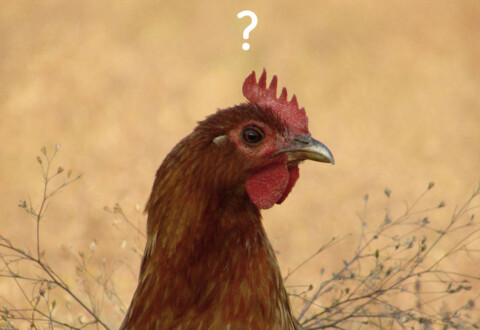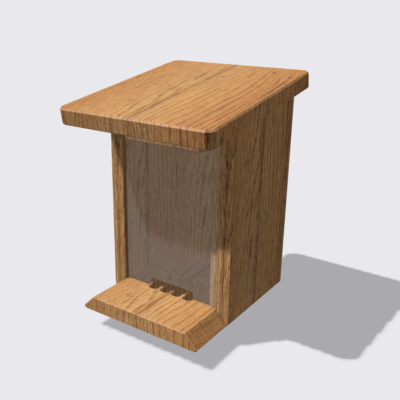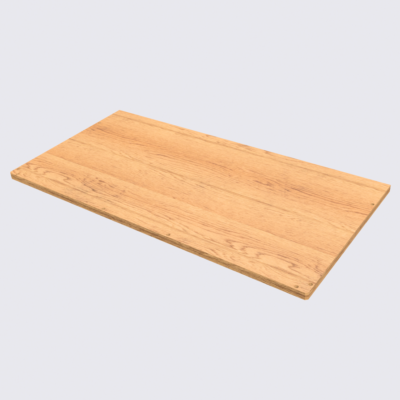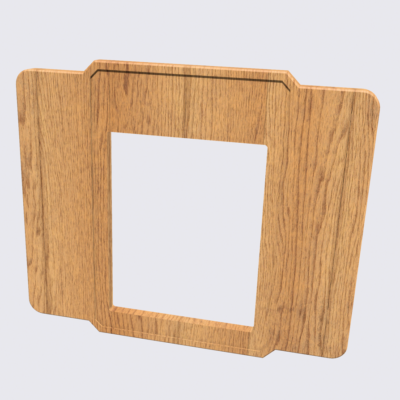It’s best to think about where the coop will be placed before you buy and/or build it. Depending on the space available and the condition/layout of your garden, there will be different options. In this blog entry, I will explain the basic principles you should follow when determining the best location for your chickens.
The most important points:
- locate the coop near the house
- and always at the edge of the run
- lots of shade in summer, lots of sunshine in winter
- the floor should be as level and dry as possible
- ideally the coop is sheltered from the wind.
Close to the house
…this is just so practical for everyday life:
Normally, your chickens will spend a lot of time in and around the coop. If you place your coop in a position that is in direct view of the terrace, living room, kitchen, etc., you can always keep a close eye on things … and of course your chickens, which you’ll have a lot of fun doing!
The proximity to your house/home also has the practical advantage that you can get there faster – to fetch fresh eggs, to clean the coop, to refill feed and water, or just to keep your chickens company. In everyday life, 20 metres more or less can make a difference.
If you have any concerns about the potential of unpleasant odours making their way into your home, I can reassure you – if the general conditions for the keeping of your chickens are right, there will be no problems with smell at all, no matter where the coop is located.
> My EXPERIENCE: “A run only starts to smell if it is too small for the number of chickens, and a chicken coop only gets to be filthy if you don’t clean it enough.”
If you only want to keep hens – which will probably be the case for the majority of chicken keepers – then noise is also rarely a problem.
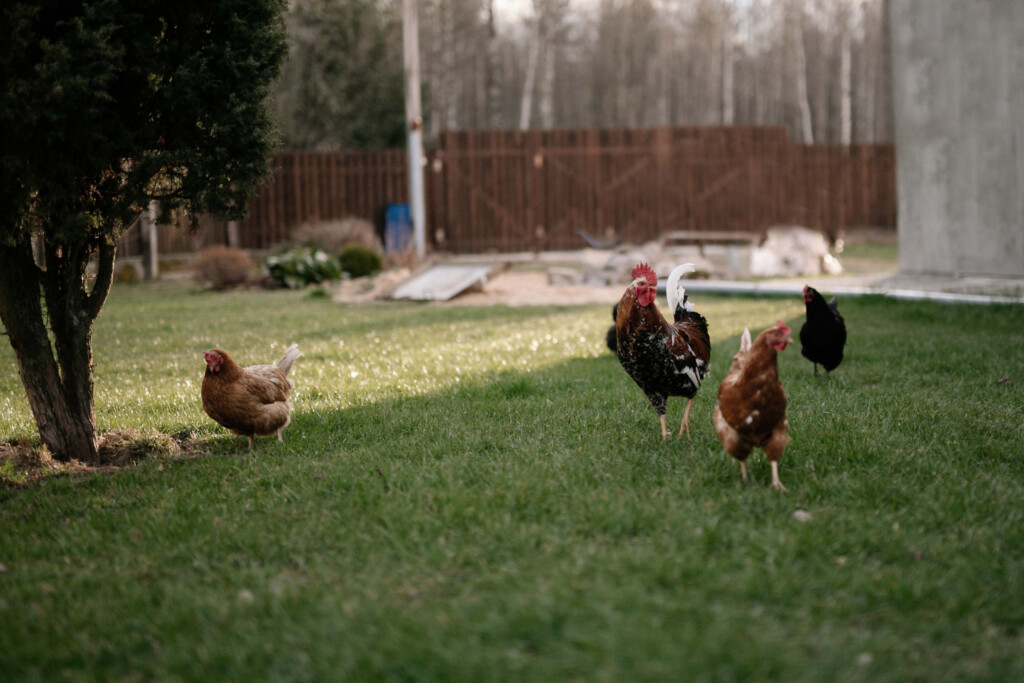
At the edge of the run
…so your shoes stay clean, even on rainy days:
It’s possible that your chickens are able to move completely freely around the whole garden. However, if the run is also separated from the rest of the garden – e.g. by a fence – then I recommend positioning the coop at the edge of the run. This way you can access the coop without entering the run, and without having to open and close doors. You will particularly appreciate this when the floor in the run is soggy and wet on rainy autumn and winter days.

Lots of shade in summer, lots of sunshine in winter,
… so the chickens feel comfortable in their home all year round:
The amount of sunlight falling on or entering the coop depends largely on its location and which direction it’s facing. In addition, the amount of light changes during the day and with the seasons. To keep the coop cool in summer, it should be in the shade, e.g. of a large tree, at least during the midday hours (i.e. only directly exposed to the early morning and late evening sun). In the winter months, the chicken coop can, or even should, be located in a place that is as sunny as possible.
> My TIP: “If your chicken coop is in the shade (i.e. to the north) of a large deciduous tree, it will automatically get more sunlight once the leaves fall in autum without having to change location!”
If necessary, you should consider using different locations for summer and winter. If your chicken coop has only one window front, this is not ideal. In this case, however, the window should at least be facing towards the south or southeast.
In any case, you should also make sure that there are always darker, sheltered areas for laying eggs and brooding.

The floor
… should be as level and dry as possible:
If the ground is level, you can save on – possibly costly – constructions to make the coop stand up straight. The ground underneath should also be as dry as possible – i.e. water should be able to drain/seep away. Wooden parts of your coop should not touch the floor if at all possible. They should also not be placed directly against an unprotected wall, because the (ground) moisture will soon cause the wood to rot.
Shelter from the wind
… even if the coop is draught-proof:
Even if the coop is of high quality and the chickens are protected from draughts inside, you should still place the coop in a location with a good amount of wind protection. The reason for this is that the chickens generally like to stay in the immediate vicinity of the coop when outside, and will therefore be very happy if it’s in a sheltered spot.
Side note – mobile chicken coops and relocation
Mobile chicken coops are a much-debated topic in chicken keeping. The idea behind this is that the ground around the coop can be better cared for by regularly moving the coop to new locations, where the chickens can find more food. After the move, the plants, and especially the grass, where the coop had been has a chance to regenerate.
If the chickens run around freely, you must have enough space in your garden for this to actually kick into effect (min. 500m²). If the garden is smaller, the chickens will primarily “work” their favourite places, regardless of the location of the coop. This means that only in large gardens is a mobile chicken coop of any real use.
> My EXPERIENCE: “Regular relocating of a chicken coop is not necessary if the run is properly designed and each chicken has enough space.”
Twice a year, e.g. in October and April, a change of location can make sense so that the coop is in a shadier area in summer and in a place with as much sun as possible in winter. Otherwise, your chickens will certainly be happy not to have to keep finding their home in different places all the time. Chickens are real creatures of habit.
